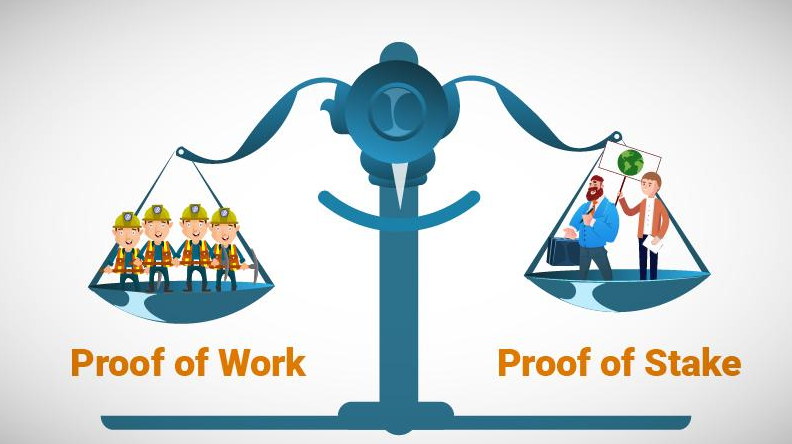
Cryptocurrencies employ various consensus mechanisms to validate transactions and maintain the security of their underlying blockchains. One such mechanism is Proof-of-Stake (PoS), designed to prevent fraud while providing users with opportunities to earn passive income. In this article, we will delve into the concept of PoS, its key characteristics, advantages, and differences from other consensus mechanisms.
Proof of Stake (PoS) in blockchain is a consensus mechanism used in cryptocurrencies that offers an alternative to the traditional mining process. Instead of miners competing to solve complex mathematical puzzles, PoS allows users to participate in securing the blockchain network by staking their tokens. This means that individuals who hold and lock up a certain amount of tokens can actively contribute to the validation and verification of transactions.
By adopting PoS, prominent cryptocurrencies like Ethereum, Cardano, Solana, and Polkadot have achieved more efficient and secure transaction processing. This mechanism enables users who stake their tokens to earn rewards for their participation in maintaining the network's integrity and security. With PoS, the need for costly and energy-intensive mining equipment is eliminated, resulting in a greener and more sustainable approach to cryptocurrency consensus.
Furthermore, PoS mining introduces several benefits that enhance the overall functionality and reliability of cryptocurrency networks. Firstly, it significantly reduces the energy consumption associated with traditional mining processes. Since PoS does not require extensive computational power, it consumes considerably less electricity, making it a greener alternative.
Additionally, PoS promotes decentralization by distributing power among token holders. The more tokens a user stakes, the greater their influence on the network. This democratic approach ensures that decisions regarding the validation of transactions and the governance of the network are made collectively and in a more inclusive manner.

Moreover, PoS enhances the security of blockchain networks. Unlike proof-of-work (PoW) systems where attackers can accumulate a majority of computational power and potentially carry out malicious activities, PoS makes such attacks economically unfeasible. In PoS, an attacker would need to acquire a majority of the tokens, which would require significant resources and would likely devalue the cryptocurrency itself.
By adopting PoS, cryptocurrencies have achieved faster transaction processing times and increased scalability. PoS systems can handle a higher number of transactions per second compared to PoW systems, ensuring smoother and more efficient user experiences. This scalability is crucial for the widespread adoption of cryptocurrencies as a means of payment and as a platform for decentralized applications.
In conclusion, PoS offers a more energy-efficient, secure, and inclusive consensus mechanism for cryptocurrencies. Its adoption by prominent cryptocurrencies like Ethereum, Cardano, Solana, and Polkadot has paved the way for improved transaction processing, scalability, and decentralized governance. As the crypto industry continues to evolve, PoS is likely to play a significant role in shaping the future of blockchain technology.
PoS distinguishes itself from Proof-of-Work (PoW), the consensus mechanism used by Bitcoin, by minimizing energy consumption and reducing financial barriers to entry. In PoS, validators play a crucial role in verifying transactions and maintaining accurate records, while PoW relies on miners solving cryptographic puzzles. PoS validators are selected based on the number of staked coins they possess, whereas PoW miners require expensive equipment and high energy consumption.
In PoS, individuals stake their cryptocurrency to act as validator nodes. These nodes collect transaction data, propose blocks for inclusion in the blockchain, and compete to have their blocks added to the ledger. Validators are incentivized with rewards in the form of cryptocurrency, making it a competitive process. Higher stakes increase the likelihood of winning rewards, but there is also a risk of losing a portion of the stake, known as slashing, for submitting inaccurate information or experiencing unexpected downtime.

Both cryptocurrency holders and regular users can engage in PoS. Validators with significant holdings can directly participate by staking their tokens and operating validator nodes. Researching the historical performance and reliability of validators is crucial to make informed choices. Additionally, individuals who own proof-of-stake cryptocurrency can delegate their tokens to validators with more network power. This delegation can be facilitated through personal crypto wallets or exchanges offering staking programs.
While PoS offers benefits such as reduced energy consumption and lower barriers to entry, it's essential to acknowledge the potential risks involved. Validators should exercise caution to avoid losses due to slashing or fraudulent activities. Users relying on third-party staking programs should carefully consider the regulatory landscape surrounding such programs, as some may fall under securities regulations.
Proof-of-Stake (PoS) represents a significant advancement in the consensus mechanisms employed by cryptocurrencies. By prioritizing staking, PoS offers an energy-efficient and accessible approach to transaction validation and blockchain security. Understanding the workings, advantages, and risks of PoS empowers users to make informed decisions when participating in PoS-based networks. This informed engagement contributes to the growth and stability of the cryptocurrency ecosystem, paving the way for a more sustainable and inclusive future.